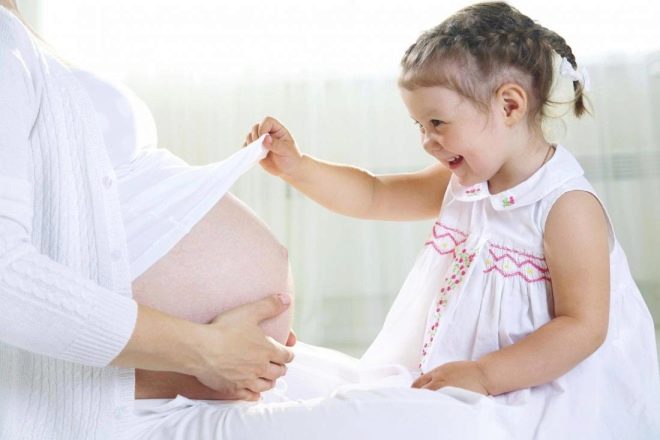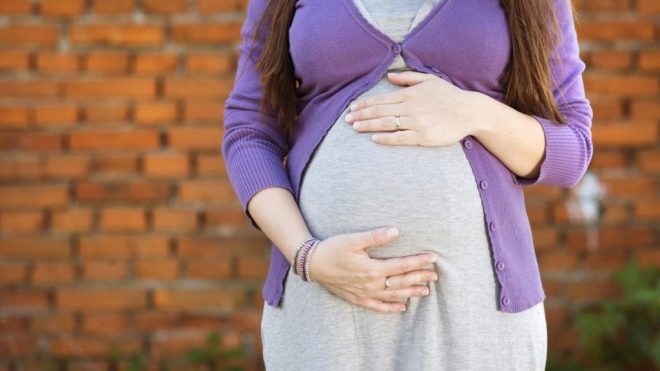What is the difference between the second birth and the first? Is it easier or harder for them to pass?
Going to the hospital for the second baby, not all pregnant women know that second births can have their own distinctive features.
Everyone has ever heard that giving birth again is usually easier and faster, but is it really so? In this article we will talk about the specifics of the birth of the second baby and find out what can affect this process.
The main differences
Every birth takes place in its own way. Therefore, there is nothing surprising in the fact that for a particular woman the second birth will be completely different from the first. If you look at the situation as a whole, relying on statistics and statistics, more than 90% of women who gave birth a second time note that the second birth differs significantly from the first (the survey of women in childbirth was conducted in a clinic in West Virginia in 2003) .
The difference is noticeable in almost all stages since the period of carrying a baby. During pregnancy, women are more relaxed about its outcome, but before an important event they worry just as much as nulliparous. To eliminate unnecessary excitement, you need to imagine how the classic second births proceed.
Terms and duration
Normal urgent (occurred on time) are considered to be birth from 37 to 42 weeks of gestation.
And even if for the first time a woman gave birth at 40 weeks, this does not mean that the situation will be repeated during the second birth. Most often (more than 80%) the birth of the second baby occurs earlier - at 38-39 weeks. Only every twentieth second baby appears on the day of the expected date of birth. 40 weeks or more second pregnancy lasts quite rarely.
The body of a woman who already has generic experience is getting ready for a generic act faster and earlier, and signs of approaching childbirth appear, on the contrary, later.
During the first birth, a woman could begin to notice “precursors” 2-3 weeks before the onset of labor, and before the second, symptoms like abdominal prolapse and stopping appear only for a couple of days, or even several hours before the onset of labor contractions.
The neck matures faster, softer and faster unfolds under the pressure of the fetal head from the inside, due to this the contractions begin earlier. Their duration is also significantly different from the duration of the process in nulliparous. The first time at all stages usually takes from 9 to 14 hours. Repeated in the majority give birth in a shorter time - from 6 to 8 hours. The muscles of the birth canal, the uterus is more stretched, they are more elastic than that of the pervorodok, and therefore each of the periods is “remembered” by the body and proceeds faster.
The psychological state of the parturient woman and the manner of her behavior in the labor room also affect the duration. A second birth person usually knows more precisely what needs to be done and when, when and how to obey the instructions of the obstetrician, how to breathe correctly, to push. In some cases, in women, second births are harder and longer than the first, but this is rather the exception associated with certain pathologies of pregnancy, the state of health of the woman in labor, her age and other factors, which we will discuss below.
Periods
If everything starts according to the classical scheme (and this is exactly what happens in 90% of the parturient women), then the beginning of the process will be the development of regular labor activity. Contractions at the very beginning will not be painful, and in the second birth, the onset often goes unnoticed. The woman pulls the sensation in her lower back for fatigue, the “forerunners,” recalling that for the first time that is how it was.As a result, when it becomes obvious that the real birth began, the cervical dilatation is already approaching 3-4 centimeters.
The period of hidden labor (latent period) in the second birth is reduced from 8 to 5-6 hours. With contractions every 5-10 minutes, you must come to the obstetric institution. In the active stage of the fight become more painful, the periods of rest between them are shorter. For those giving birth the second time, this period lasts about 3 hours, which is at least 2-3 hours less than the first time.
Transitional contractions that separate the period of contractions from attempts, at the birth of the second baby, are even faster and take no more than half an hour. After that, the neck is fully opened, and the potent period begins. Some manage to give birth to a baby in just a few attempts, but not to everyone. Although the rest of this period does not take much time.
After all, the second period of childbirth takes place in 30-40 minutes. But the third period may be slightly delayed compared to the first birth: the placenta usually gives birth to a little more than a little longer, more often there is a need for manual separation and auxiliary obstetric techniques.
Are second birth more painful? Usually not. On the contrary, greater elasticity and stretching of the birth canal helps to reduce pain. When the process is repeated, the need for episiotomy or perineotomy (dissection of the perineum to facilitate the birth of the head) is less common.
Recovery
The recovery period after the birth of the second baby usually lasts shorter. Women quickly start to get up, move, do not experience significant problems with lactation and the establishment of breastfeeding. It is much easier for them to cope with a newborn while living together than happy mothers of their firstborn.
The probability of complications after childbirth is at the level of the first. Baseline risks are rated the same. The only thing that can be different is the higher risk of uterine hypotension. Weaker contractions in the postpartum period may be associated with fatigue and stretching of the uterine muscle tissue.
Hypotension of the reproductive organ creates the risk of postpartum hemorrhage. Therefore, for the puerperal carefully observed. If the contractility of the uterus raises questions, inject contractions that increase the tone of the uterine muscles. This complication occurs in 0.5% of all cases of repeated delivery.
Infectious and inflammatory processes may also develop. As in the case of the first birth, the risk of such complications is no more than 2.5%. The seams in the perineum, if they exist, become inflamed or disperse in 3% of cases, usually while ignoring the rules of hygiene and their care. The fall of immunity after repeated delivery is a frequent phenomenon, and therefore the exacerbation of chronic diseases in women, as well as infection with viral or bacterial ailments, is not excluded.
What is affected?
Multiple factors can influence the nature and characteristics of repeated deliveries. They are necessarily taken into account by obstetrician-gynecologists. Whether the second birth will be easier or more complex depends on the following points.
Gap between pregnancies
After a previous birth, the female body needs time to recover. Therefore, the best is considered a break between births in 2-4 years. If less has passed, it is possible that both pregnancy and childbirth can occur with complications. The second delivery postponed in time is also not the best option.
10 years after the first, after 13–14 years, the woman’s body begins to “forget” the existing generic experience at the level of muscular and neural “memory”, and then the second birth proceeds as the first. “Forgetting” begins about 7 years after giving birth.
Mother's age
The age of the woman plays an important role not only for the first childbirth, but also for repeated. Firstly, the genetic quality of eggs over the years deteriorates, and therefore increases the risk of having a baby with chromosomal abnormalities and defects.
The process of childbirth also depends on the age of the woman in labor. It is usually harder for women to give birth at the age of 37, and also for too young girls who were barely 19 at the time of the birth of the second baby.
Health status
If a woman is generally healthy, does not suffer from overweight, hypertension, chronic diseases of internal organs, then there is essentially no reason for a protracted or difficult birth. But the birth process is very difficult to predict, because it depends not only on the physiology, but also on the psychological attitude of the pregnant woman, her emotional background.
Complicating the process of birth can be complicated by multiple births, high and low water levels, umbilical cord entanglement, placenta previa, large fruit. In some situations, it is safer to make a planned caesarean section, and this possibility will be discussed with a woman if she has the prerequisites. Of all the risks that are identified during pregnancy, the woman is usually informed in consultation. If at first birth there were serious breaks, then the probability of their recurrence increases by 50%.
If the first birth was rapid, the same probability exists in the second pregnancy. Advance risk assessment and correct management of pregnancy and childbirth in many cases help to prevent negative consequences.
Women reviews
The question of whether second births are easier is often discussed in thematic forums on the Internet. And the majority of opinions completely confirm the overall average statistics: they give birth faster and easier the second time. But there are feedbacks to the contrary: usually more difficult second births are a consequence of pathologies and aggravating factors.
Some women in childbirth decided to experiment for the second time and agreed to give birth in a vertical position or a partnership. But the majority still tries to adhere to the usual traditions: in the maternity hospital or the perinatal center, and not by contract, but free of charge, according to the OMS policy, since it becomes obvious by the birth of the second baby no money will make the process any better.
About what you need to remember before the second birth, see the following video.



















